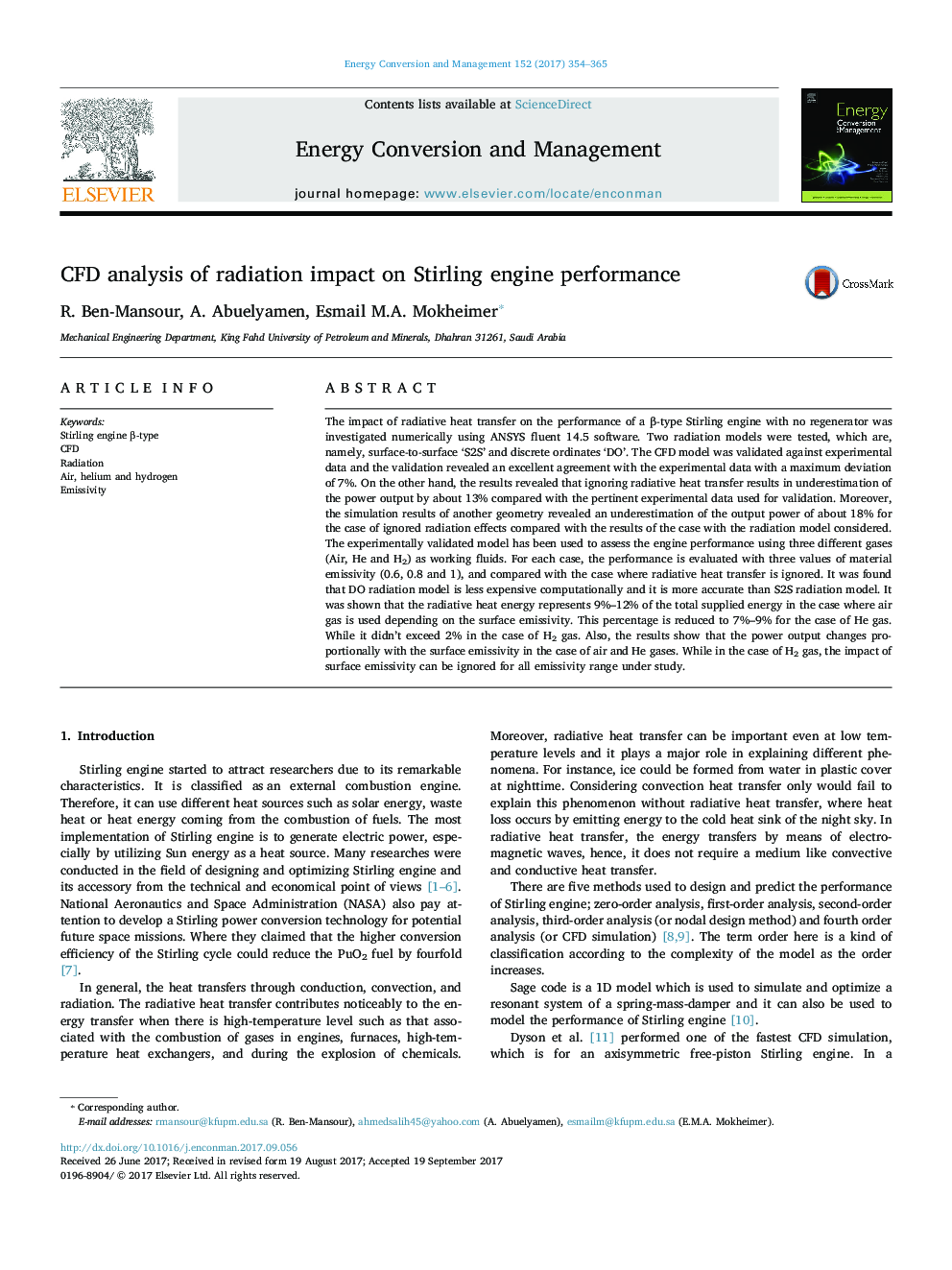| کد مقاله | کد نشریه | سال انتشار | مقاله انگلیسی | نسخه تمام متن |
|---|---|---|---|---|
| 5012314 | 1462810 | 2017 | 12 صفحه PDF | دانلود رایگان |
عنوان انگلیسی مقاله ISI
CFD analysis of radiation impact on Stirling engine performance
دانلود مقاله + سفارش ترجمه
دانلود مقاله ISI انگلیسی
رایگان برای ایرانیان
موضوعات مرتبط
مهندسی و علوم پایه
مهندسی انرژی
انرژی (عمومی)
پیش نمایش صفحه اول مقاله

چکیده انگلیسی
The impact of radiative heat transfer on the performance of a β-type Stirling engine with no regenerator was investigated numerically using ANSYS fluent 14.5 software. Two radiation models were tested, which are, namely, surface-to-surface 'S2S' and discrete ordinates 'DO'. The CFD model was validated against experimental data and the validation revealed an excellent agreement with the experimental data with a maximum deviation of 7%. On the other hand, the results revealed that ignoring radiative heat transfer results in underestimation of the power output by about 13% compared with the pertinent experimental data used for validation. Moreover, the simulation results of another geometry revealed an underestimation of the output power of about 18% for the case of ignored radiation effects compared with the results of the case with the radiation model considered. The experimentally validated model has been used to assess the engine performance using three different gases (Air, He and H2) as working fluids. For each case, the performance is evaluated with three values of material emissivity (0.6, 0.8 and 1), and compared with the case where radiative heat transfer is ignored. It was found that DO radiation model is less expensive computationally and it is more accurate than S2S radiation model. It was shown that the radiative heat energy represents 9%-12% of the total supplied energy in the case where air gas is used depending on the surface emissivity. This percentage is reduced to 7%-9% for the case of He gas. While it didn't exceed 2% in the case of H2 gas. Also, the results show that the power output changes proportionally with the surface emissivity in the case of air and He gases. While in the case of H2 gas, the impact of surface emissivity can be ignored for all emissivity range under study.
ناشر
Database: Elsevier - ScienceDirect (ساینس دایرکت)
Journal: Energy Conversion and Management - Volume 152, 15 November 2017, Pages 354-365
Journal: Energy Conversion and Management - Volume 152, 15 November 2017, Pages 354-365
نویسندگان
R. Ben-Mansour, A. Abuelyamen, Esmail M.A. Mokheimer,